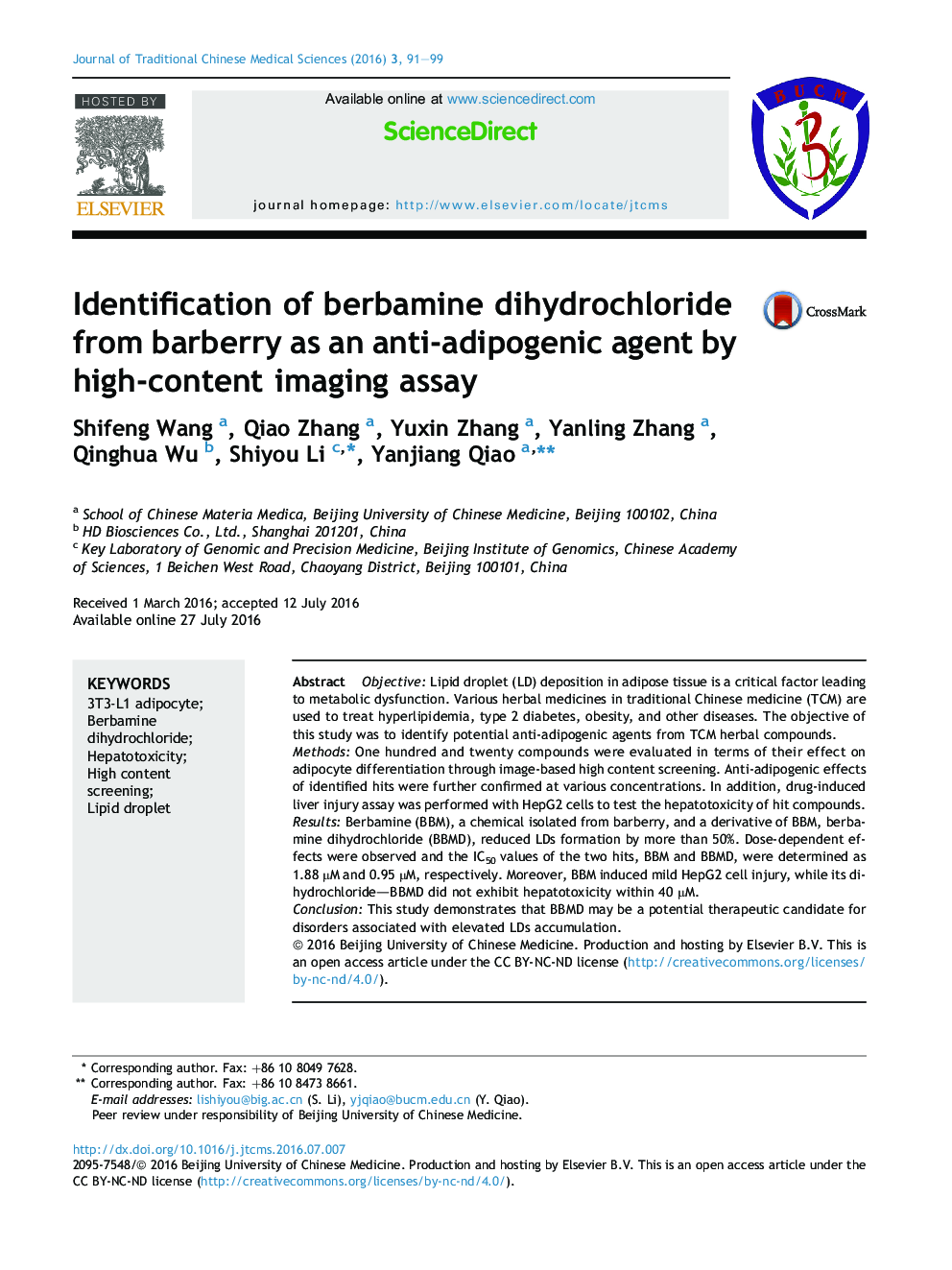| کد مقاله | کد نشریه | سال انتشار | مقاله انگلیسی | نسخه تمام متن |
|---|---|---|---|---|
| 1993085 | 1541183 | 2016 | 9 صفحه PDF | دانلود رایگان |
ObjectiveLipid droplet (LD) deposition in adipose tissue is a critical factor leading to metabolic dysfunction. Various herbal medicines in traditional Chinese medicine (TCM) are used to treat hyperlipidemia, type 2 diabetes, obesity, and other diseases. The objective of this study was to identify potential anti-adipogenic agents from TCM herbal compounds.MethodsOne hundred and twenty compounds were evaluated in terms of their effect on adipocyte differentiation through image-based high content screening. Anti-adipogenic effects of identified hits were further confirmed at various concentrations. In addition, drug-induced liver injury assay was performed with HepG2 cells to test the hepatotoxicity of hit compounds.ResultsBerbamine (BBM), a chemical isolated from barberry, and a derivative of BBM, berbamine dihydrochloride (BBMD), reduced LDs formation by more than 50%. Dose-dependent effects were observed and the IC50 values of the two hits, BBM and BBMD, were determined as 1.88 μM and 0.95 μM, respectively. Moreover, BBM induced mild HepG2 cell injury, while its dihydrochloride—BBMD did not exhibit hepatotoxicity within 40 μM.ConclusionThis study demonstrates that BBMD may be a potential therapeutic candidate for disorders associated with elevated LDs accumulation.
Journal: Journal of Traditional Chinese Medical Sciences - Volume 3, Issue 2, April 2016, Pages 91–99
